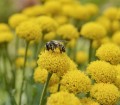Scorpions may just be the quintessential creepy crawly that few campers want to come into contact with while on the trail. If their armored and alien looking bodies, claws, multiple sets of eyes and venomous sting don’t trigger a person’s primordial fears I don’t know what will. All of these traits come from the Scorpion’s heritage as an arachnid arthropod who’s shape hasn’t changed much in more than 400 million years.
All of the more than 1,700 known species of Scorpion are venomous
Today, Scorpions can be found on every continent on earth except Antarctica, and in all but the coldest climates. England and New Zealand were safe until the 19th century when Scorpions were able to come ashore, most likely in crates of fruit. One other oddity of Scorpions is that they glow under UV light. Researchers working at night will use black lights to spot Scorpions crawling around the desert floor.
All of the more than 1,700 known species of Scorpion are venomous, but luckily, world wide, only a handful have been known to be fatal to humans. Most hunting activity of Scorpions happens at night and involves lying in wait for insects to come near. Even though they have multiple sets of eyes- Scorpions eyesight is not that acute and registers mostly movement and changes in color and shadow. They will often rely on sensory hairs on their pedipalps (claws) to know when to strike, using their claws more often than their sting to subdue their prey. When Scorpions do sting, the neurotoxin comes from two glands in the tail and the amount injected is voluntarily controlled. The type of neurotoxin varies from species to species and is tailored to subdue the prey they most often hunt.
Most stings in humans will involve pain, swelling, sweating and nausea. More acute symptoms are similar to anaphylaxis such as difficulty breathing, decreased levels of consciousness and shock. Treatment should include cleaning of the wound, ice, pain control and medical care. Arizona and the Sonoran Desert is home to the Bark Scorpion (pictured below left) which is the only species known to be fatal in North America, if you suspect the sting came from one of these small translucent, sand colored Scorpions contact poison control and seek medical help immediately.
Campers can help themselves avoid Scorpions by being mindful of their surroundings, watching where they step and place their hands. Before dressing you should always shake out your boots and clothing that have been left out overnight just in case a Scorpion may have tried to settle in for the night.




